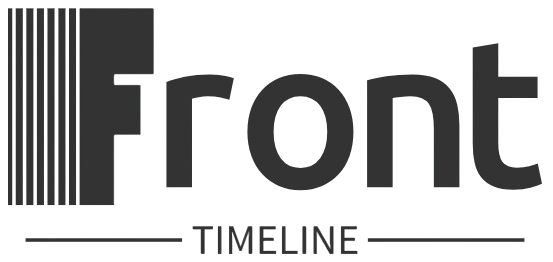The Benefits of Domain Collaboration Tools
Collaboration is the cornerstone of success in today’s interconnected world. Whether it’s in the workplace, academia, or creative endeavors, the ability to work together seamlessly and efficiently is crucial for achieving goals and driving innovation. In the digital age, domain collaboration tools have emerged as essential resources for facilitating teamwork, communication, and project management across various industries and disciplines. From shared documents and real-time messaging to project tracking and virtual meetings, these tools offer a wide range of benefits that can enhance productivity, foster creativity, and streamline workflows.
The Evolution of Collaboration Tools

Collaboration tools have come a long way since the early days of email and shared folders. With advances in technology and the rise of cloud computing, today’s domain collaboration tools offer a powerful array of features and functionalities that enable teams to collaborate in real time, regardless of their physical location. From project management platforms like Asana and Trello to communication tools like Slack and Microsoft Teams, there is no shortage of options for teams looking to improve their collaboration and productivity.
Enhanced Communication and Connectivity

One of the primary benefits of domain collaboration tools is the ability to facilitate seamless communication and connectivity among team members. By providing a centralized platform for sharing information, exchanging ideas, and coordinating tasks, these tools help to break down silos, bridge communication gaps, and ensure that everyone is on the same page. Whether it’s through instant messaging, video conferencing, or shared documents, collaboration tools enable teams to stay connected and engaged, regardless of their physical location.
For example, Slack is a popular collaboration tool that allows teams to communicate in real time through channels, direct messages, and integrations with other apps. By providing a central hub for all team communication, Slack helps to streamline conversations, reduce email clutter, and ensure that important information is easily accessible to everyone. Similarly, tools like Zoom and Microsoft Teams enable teams to hold virtual meetings, share screens, and collaborate on documents in real time, regardless of where team members are located.
Improved Project Management and Workflow

Another key benefit of domain collaboration tools is their ability to improve project management and workflow efficiency. By providing tools for task tracking, milestone setting, and deadline management, these platforms help teams to stay organized, prioritize tasks, and ensure that projects are completed on time and within budget. Whether it’s through kanban boards, Gantt charts, or task lists, collaboration tools offer a variety of features that can help teams to plan, execute, and monitor their projects more effectively.
For example, project management platforms like Asana and Trello allow teams to create tasks, assign responsibilities, set deadlines, and track progress in real time. By providing a visual overview of project timelines, resource allocations, and task dependencies, these tools help teams to stay on track, identify bottlenecks, and make informed decisions about resource allocation and project priorities. Additionally, tools like Jira and Monday.com offer advanced features for agile project management, issue tracking, and team collaboration, making it easier for teams to adapt to changing project requirements and collaborate effectively.
Streamlined Document Collaboration and Sharing

Document collaboration is a critical aspect of team work, especially in industries like design, marketing, and content creation. Domain collaboration tools provide a secure and centralized platform for teams to create, edit, and share documents in real time, ensuring that everyone has access to the latest versions and can collaborate seamlessly on projects. Whether it’s through Google Docs, Dropbox Paper, or Microsoft Office 365, these tools offer a range of features that make it easy for teams to work together on documents, presentations, and spreadsheets.
For example, Google Docs allows teams to collaborate on documents simultaneously, track changes, and leave comments for feedback, all within a cloud-based platform that ensures data security and accessibility. Similarly, tools like Dropbox Paper and Microsoft Office 365 offer features for version control, file sharing, and real-time editing, making it easy for teams to collaborate on documents, presentations, and other files, regardless of their location or device. By providing a centralized platform for document collaboration, these tools help to streamline workflows, reduce duplication of work, and ensure that everyone is working from the same source of truth.
Enhanced Security and Data Protection
With the increasing prevalence of cyber threats and data breaches, security is a top priority for teams and organizations looking to collaborate online. Domain collaboration tools offer a range of security features and data protection measures that help to safeguard sensitive information, prevent unauthorized access, and ensure compliance with data privacy regulations. Whether it’s through encryption, access controls, or multi-factor authentication, these tools provide a secure environment for teams to collaborate and share information without compromising data security.
For example, platforms like Slack and Microsoft Teams offer end-to-end encryption for messages and files, ensuring that data is protected during transit and at rest. Similarly, project management platforms like Asana and Trello offer access controls and permissions settings that allow teams to restrict access to sensitive information and ensure that only authorized users can view, edit, or share confidential data. By implementing strong security measures and data protection protocols, domain collaboration tools help teams to collaborate safely and securely, without exposing themselves to unnecessary risks or vulnerabilities.
Increased Productivity and Efficiency
Ultimately, the primary goal of domain collaboration tools is to enhance productivity and efficiency for teams and organizations. By providing a centralized platform for communication, project management, document collaboration, and data security, these tools help teams to work smarter, not harder, and achieve more in less time. Whether it’s through automation, integration with other tools, or real-time reporting and analytics, collaboration tools offer a range of features that can help teams to streamline workflows, eliminate bottlenecks, and focus on high-value tasks that drive innovation and growth.
For example, tools like Zapier and IFTTT allow teams to automate repetitive tasks, streamline workflows, and connect different apps and services to create seamless integrations that save time and reduce manual effort. Similarly, analytics tools like Google Analytics and Tableau offer real-time reporting and data visualization features that help teams to track performance, identify trends, and make data-driven decisions about resource allocation and project priorities. By leveraging the power of collaboration tools, teams can improve their productivity and efficiency, reduce time-to-market, and achieve better results with less effort.
Future Implications and Trends
As technology continues to evolve and new tools and platforms emerge, the future of domain collaboration tools is likely to be shaped by trends such as artificial intelligence, machine learning, and augmented reality. These technologies have the potential to revolutionize the way teams collaborate, communicate, and work together, by providing advanced features for automation, predictive analytics, and virtual collaboration that enhance the user experience and drive innovation.
For example, AI-powered chatbots and virtual assistants could soon become standard features in collaboration tools, offering personalized recommendations, proactive notifications, and natural language processing capabilities that make it easier for teams to find information, automate tasks, and communicate more effectively. Similarly, augmented reality and virtual reality technologies could enable teams to collaborate in immersive virtual environments, regardless of their physical location, by providing features for 3D modeling, spatial awareness, and real-time interaction that enhance the collaboration experience and break down barriers to communication and creativity.
Conclusion
In conclusion, domain collaboration tools offer a wide range of benefits for teams and organizations looking to improve their communication, project management, document collaboration, data security, productivity, and efficiency. By providing a centralized platform for sharing information, coordinating tasks, and working together in real time, these tools help to break down silos, bridge communication gaps, and ensure that everyone is on the same page. Whether it’s through enhanced communication and connectivity, improved project management and workflow, streamlined document collaboration and sharing, enhanced security and data protection, or increased productivity and efficiency, collaboration tools play a crucial role in driving innovation and success in today’s digital age.
As we look to the future, the implications of domain collaboration tools are vast and exciting, with the potential to revolutionize the way teams collaborate, communicate, and work together. By leveraging emerging technologies like artificial intelligence, machine learning, and augmented reality, collaboration tools are poised to transform the collaboration experience, enhance productivity, and drive innovation in ways we have yet to imagine. As teams continue to embrace the power of collaboration tools, the possibilities for growth, creativity, and success are truly limitless.
Long story short, domain collaboration tools are not just toolsthey are enablers of collaboration, innovation, and success. By harnessing the power of these tools, teams can work together more effectively, communicate more seamlessly, and achieve greater results than ever before. So, what are you waiting for? Take your collaboration to the next level with domain collaboration tools and unlock a world of possibilities for your team and organization.




